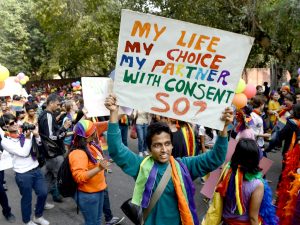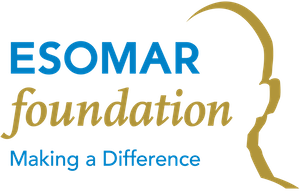
| This complex study both in terms of the design and operationalizing was executed by a team of researchers at IMRB International, India. A team of investigators experienced in conducting social research and well acquainted with the regional languages were trained for collecting the data.
Background Although the existence of homosexuality is evident in the Indian culture since pre-historic times, as seen in different forms of art like paintings and carvings in temples, homosexuals are in reality depicted more as an anomaly. Therefore the men who have sex with men (MSM) are highly stigmatized and those who are engaged in this type of sexual behaviour are usually treated with social contempt. Furthermore the inequality arising from our normative constructions of masculinity, social attitudes towards feminized males and their ‘unusual or unnatural’ sexual practices, instances of sexual abuse, assault and rape, poverty and disempowerment, alongside legal prejudice impacts their identity in particular and life in general. The need for research In a country where even the existence of the MSM population is not acknowledged, the issues that they are faced with are least of our concerns. The vulnerabilities among men who have sex with other men are well established across the public health arena, especially with reference to HIV/AIDS and other sexually transmitted infections. Low rates of condom usage, multiple sex partners and inconsistent lubricant use makes them more susceptible. Although the efforts of prevention and support in care have been going on for a while now, the Government records point out that the reach of such interventions has not been quite successful. The seclusion and society’s aversion to their acceptance has become one of the most significant impediments against the HIV/AIDS programs in India. A major cause being that till late men-to-men sex was seen as immoral and unnatural, not just by general public but also by the legal system, which has resulted in keeping these communities at bay from all the government initiatives and programs aimed towards HIV prevention and care as most of the MSM population remain hidden and ‘hard-to-reach’. The objective The endeavor was to reach this section of hard-to-reach population through this research project primarily to understand their HIV related risk behaviors. The target group was sexually active men who have sex t men who were not taking services from any Targeted Intervention (TI) projects being implemented in the country by NGOs with support from the Department of AIDS control. |
| Methodology of the research
The challenge of the study was to identify and test a methodology to approach this inaccessible, dark and hidden section of the society. Probability sampling methods do not work with hard-to-reach groups since there is no sampling frame to choose from, there are no defined boundaries and most importantly there are strong privacy concerns. The MSM population is hard-to-reach and harder-to-sample. The plausible way to tap the hard-to-reach MSM seemed to be through the peers or their close networks and thus the use of Respondent Driven Sampling (RDS) was arrived at. RDS, in the past, has been studied and carried out to reach hard-to-reach groups, however this was for the first time that a study of this scale: across three states and a sample size of 1650, with a focus on MSM was carried out using RDS. RDS is a chain-referral system where current respondents recruit their friends/peers for the study to be future respondents. It employs a dual system of structured compensation: a reward for being interviewed and a reward for recruiting peers to be interviewed. Broadly, it combines snowballing sampling with the mathematical model that weighs the sample to compensate for the fact that the sample was collected in a non-random way. However the selection of the initial respondents referred to as our ‘seeds’ provides an opportunity for making it representative across age, education and geographical area. Analytically, respondent driven sampling gives the opportunity and control and to look at the data in a more organized manner as the common characteristics such as network size, educational background, sexual identity etc. can be tracked in a better manner. The data was analysed across sexual identity, age, use of intoxicants, knowledge on HIV/AIDS among various others. |
| The impact of the research
This piece of research allowed establishing the indicators with respect to HIV related knowledge, attitudes and practicing among the MSM community. Subsequent to the research a helpline exclusive to the MSM community was launched with an objective to address the issues that they are faced with, counsel them as well as their family members and eventually lead to a sustainable behavior change. Further research has been conducted to track the success and evaluate impact on the panel sample. This methodology has proved to be path breaking to reach the groups with no defined boundaries and can be replicated by various organizations working in the development sector. Groups like drug users, female sex workers, transgender among various others can be reached to in order to understand their behaviors, design specific programmes and evaluate their impact. |
